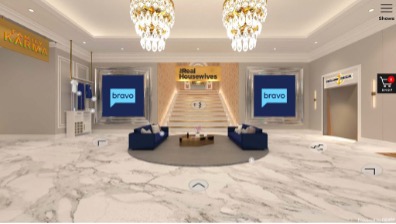The retail market is changing, and it is increasingly going virtual. This change, as described by the trade publication Total Retail, is “critical” to understand. Not just for retailers, but for all vendors supporting the retail industry, including printers.
According to a study from Obsess, “The Metaverse Mindset: Consumer Shopping Insights,” 60% of young shoppers think brands should provide shopping experiences in the metaverse. Of these, 54% feel that they should be able to shop anywhere they go online, and 45% feel that metaverse environments should be like online shopping malls. These malls should be complete with full customer service just like brick-and-mortar locations. Indeed, according to a Forrester Consulting study conducted on behalf of Shopify (which, incidentally, is accessed by chatbot), 52% of brands plan to invest in technology that enables online customers to easily connect with brand representatives through their channel of choice, such as chat, social, text, or video.

Source: Obsess
What is virtual shopping? It means a lot of things, and—frankly—the definition is still becoming clear. It can be as space-age as walking through a virtual store just as you would a brick-and-mortar one. Or it can be as mundane as accessing a customer service rep through a chatbot or on-demand video while shopping online. It can be as fanciful as buying an NFT for a custom skin for your favorite avatar, or as practical as using the “try on” or “view in room” features of augmented reality to visualize what a purchase will look like on your body or in your home. In other words, virtual shopping is anything that combines the digital and physical worlds, and there are a million and one ways to do that.

Source: WarbyParker.com
The important takeaway is that while “metaverse” sounds impersonal and scary, it personalizes digital shopping experiences and makes them more accessible. Younger shoppers are addicted to it, and that addiction will drive a mainstreaming of virtual shopping in a way that is already starting to affect everyone involved in sales, marketing, and retail.
Here are some more data points from Obsess:
- 41% of Gen Zers said brands should sell in the metaverse.
- 40% of Gen Zers and 40% of Millennials would be interested in shopping for real or virtual products in metaverse environments that brands create.
- 75% of Gen Z shoppers have already purchased a digital item within a video game.
How does this affect you? As consultants who help your clients market their products, the virtual world matters, more than might seem comfortable. Regardless of your level of direct involvement, as the world of retail changes, this impacts your clients, so it impacts you. Whether it’s how you help guide and support them in marketing their products or understanding the changing competitive environment to help your customers navigate it, these changes impact you one way or the other.

Source: DAPY/RealityBLU
You can also help your clients enter these worlds. You aren’t likely to build a 3D virtual store that customers will enter using a VR headset, for example, but you can build 3D models of their products with which customers can engage while shopping online or create holotwins that shoppers can place in their environments to watch brand ambassadors demonstrate products. With advances in technology, these are practical applications that any printer can offer right now.
As I’ve written before, the metaverse isn’t coming. It’s already here. The question is at what level that printers are willing to engage with it. Granted, there are elements of the metaverse that most printers aren’t likely to get involved with, but there are many that they can…and should.










Discussion
Join the discussion Sign In or Become a Member, doing so is simple and free